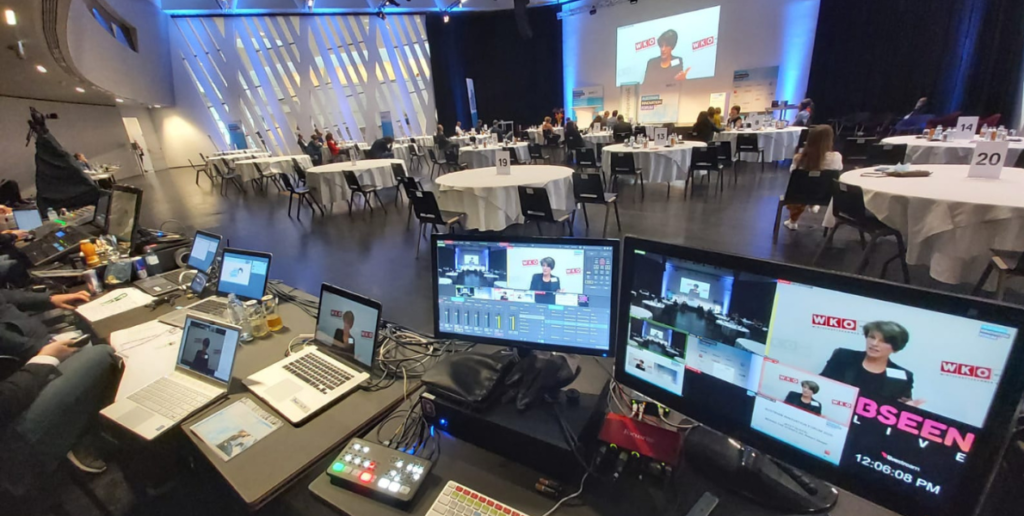Virtual events have revolutionized how businesses connect with audiences globally. From webinars to large-scale conferences, the shift toward digital gatherings has surged, driven by advancements in technology and the need for flexible, cost-effective solutions. However, planning virtual events that captivate and engage requires strategy. In this guide, we’ll walk you through best practices to ensure your next virtual event is a resounding success.

Why Virtual Events Matter: Key Advantages
Virtual events aren’t just a pandemic-era trend—they’re a long-term solution for modern communication. Here’s why they’re worth considering:
1. Cost-Effective & Scalable
Hosting physical events involves venue rentals, catering, and travel expenses. Virtual events eliminate these costs, allowing you to allocate resources to content quality, marketing, or technology. Plus, they can scale to accommodate thousands of attendees without space constraints.
2. Global Reach & Accessibility
Break geographical barriers by inviting speakers and attendees from around the world. Virtual platforms also offer accessibility features like live captions and translations, fostering inclusivity.
3. Data-Driven Insights
Track attendee behavior in real time with analytics tools. Monitor session attendance, engagement rates, and feedback to refine future events.
4. Eco-Friendly
Reduce carbon footprints by minimizing travel and physical resource use. A 2021 study by EventMB found virtual events produce 90% less CO2 than in-person counterparts.
5. Flexibility & Convenience
Attendees can join from anywhere, and sessions are often recorded for on-demand viewing, enhancing long-term value.
When to Choose a Virtual Event Over a Physical One
While in-person events foster face-to-face connections, virtual events excel in specific scenarios:
- Global or Remote Audiences
If your audience spans multiple time zones, virtual events ensure broader participation. - Budget Constraints
Ideal for startups or small businesses with limited funds. - Health and Safety Concerns
A reliable alternative during flu seasons, pandemics, or political unrest. - Short-Format Content
Webinars, workshops, or product launches often thrive online. - Data-Centric Goals
Need detailed attendee metrics? Virtual platforms offer robust tracking.
Choosing the Right Virtual Platform and Services
Your platform is the backbone of your event. Consider these factors:
Key Features to Look For
- Interactive Tools: Polls, Q&A, chat, and breakout rooms.
- Analytics Dashboard: Track attendance, engagement, and feedback.
- Custom Branding: Align the interface with your company’s visuals.
- Integration Capabilities: CRM, email tools, or payment gateways.
- Technical Support: 24/7 assistance to troubleshoot issues.
Top Virtual Event Platforms
- Zoom Webinars: Best for small to mid-sized events.
- Hopin: Offers expo booths and networking lounges.
- Microsoft Teams: Integrates seamlessly with Office 365.
- vFairs: Customizable for large conferences and trade shows.
Additional Services to Enhance Your Event
- Virtual Event Planners: Professionals to manage logistics.
- AV Production Teams: Ensure high-quality audio/visuals.
- Moderators: Facilitate sessions and manage Q&A.
Pro Tip: Always conduct a tech rehearsal to iron out glitches.
Interactive Engagement Activities to Keep Attendees Hooked
Engagement is the #1 challenge for virtual events. Combat Zoom fatigue with these tactics:
1. Live Polls and Surveys
Use Slido or Mentimeter to gather real-time feedback and spark discussions.
2. Networking Opportunities
- Breakout Rooms: Small group discussions on niche topics.
- Speed Networking: Match attendees randomly for quick chats.
3. Gamification
- Leaderboards: Award points for session attendance or social shares.
- Virtual Scavenger Hunts: Encourage exploration of event features.
4. Social Media Integration
Create a hashtag for live-tweeting sessions or hosting Instagram contests.
5. Virtual Swag Bags
Offer downloadable resources, discount codes, or free trials.
Planning and Promoting Your Virtual Event
1: Define Goals and Audience
- SMART Goals: Example: “Generate 500 leads via a product demo webinar.”
- Audience Persona: Tailor content to their interests and pain points.
2: Create a Detailed Timeline
- 3–6 Months Prior: Book speakers and finalize the platform.
- 1 Month Prior: Launch promotions and send reminders.
- Day-of: Assign roles (host, tech support, moderator).
3: Promote Strategically
- Email Marketing: Send save-the-dates and agenda sneak peeks.
- Social Media: Tease speaker interviews or session highlights.
- Partnerships: Collaborate with influencers or industry groups.
- Paid Ads: Target LinkedIn or Google Ads to reach professionals.
4: Optimize for SEO
- Embed keywords like “planning virtual events” in your event page content.
- Write blog posts or guest articles to drive organic traffic.
5: Post-Event Follow-Up
- Share recordings and surveys.
- Nurture leads with tailored email sequences.
Conclusion: Master the Art of Virtual Events
Virtual events are here to stay, offering unparalleled opportunities for connection and growth. By selecting the right platform, prioritizing engagement, and promoting strategically, you’ll create memorable experiences that resonate globally. Ready to elevate your next event? Start planning today!